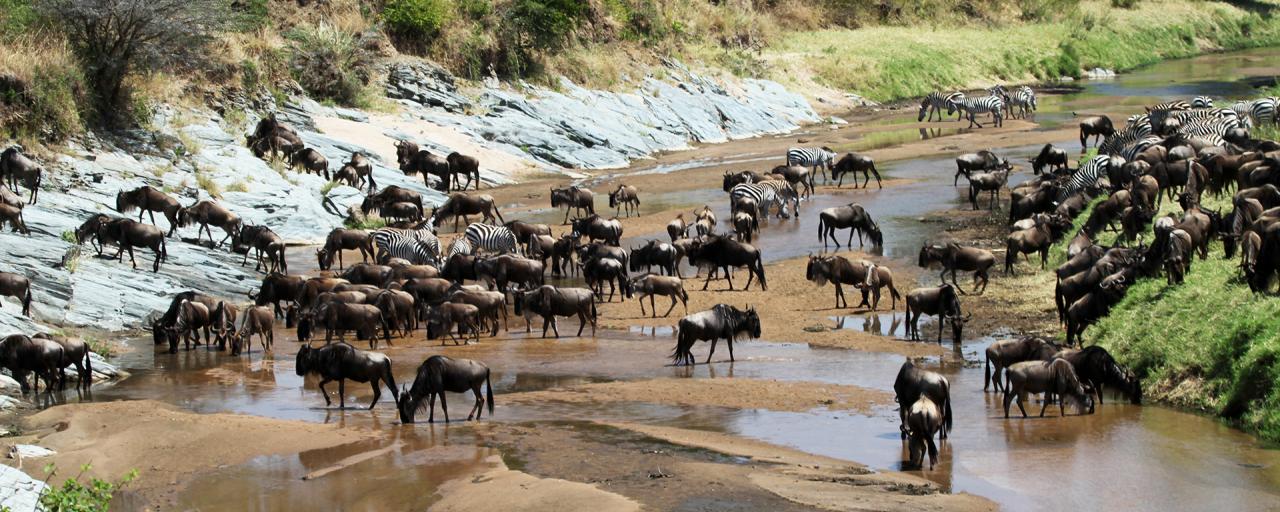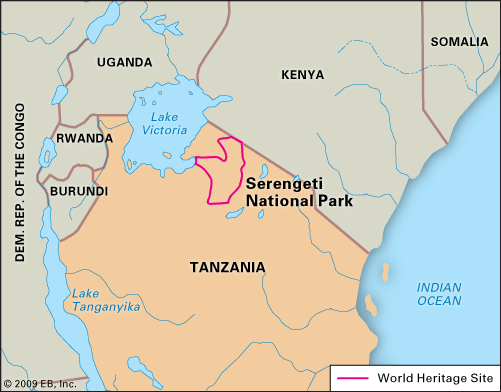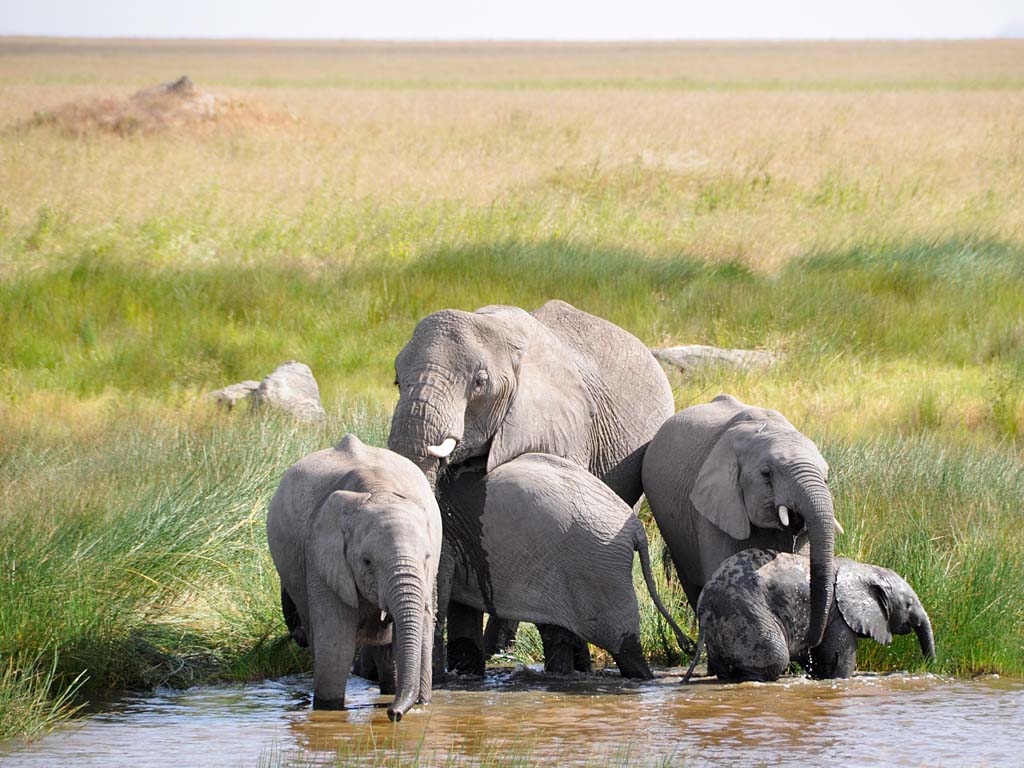The size of serengeti national park
The size of serengeti national park: Serengeti national park is an iconic park and a Tanzania wildlife safari destination situated in the northern safari circuit of Tanzania, the park is a UNESCO World Heritage Site listed in 1981. Serengeti national park is located in northwestern Tanzania bordering Kenya border to the North, Ngorongoro conservation area to the southeast and Maswa game reserve to the southwest.

Serengeti national park lies in the Serengeti ecosystem which spans in the northern region of Tanzania, the park covers an area of 30,000 square kilometers. The size of Serengeti national park makes the park the second largest protected area in Tanzania coming second to Selous game reserve, the park hosts the best and the oldest ecology in both Tanzania and the whole continent of Africa.
Serengeti national park encompasses of rolling grasslands, savannah, riverine forest and woodlands, the park is a recognized home of over 70 recorded animal species and over 500 bird species. Animals living in Serengeti national park include lions, leopards, cheetahs, striped hyenas, spotted hyenas, African wild dogs, rhinos, elephants, hippos, elands, impalas, waterbucks, topi antelopes, hartebeests, gemsboks, Thomson gazelles, Maasai giraffes, buffalos, warthogs, jackals, bat-eared foxes, serval, caracals, mongooses, genets, honey badgers and many others.
Regions making up Serengeti national park
Serengeti national park is divided into 4 regions that are central (Seronera) Serengeti, Western Corridor, Northern and Southern Serengeti.
Central (Seronera) Serengeti
 Central (Seronera) Serengeti lies in the central region of the endless plains of Serengeti national park, Seronera/ central Serengeti is dominated by a vast range of different ecosystems including grasslands, acacia forests and riverine areas/ Seronera region is hosts a huge population of wildlife with a variety of wildlife species and because of theta, the area is an excellent region for Tanzania game viewing tours. Seronera region is also famous for its amazing hot air balloon safaris where they are best conducted in Serengeti national park.
Central (Seronera) Serengeti lies in the central region of the endless plains of Serengeti national park, Seronera/ central Serengeti is dominated by a vast range of different ecosystems including grasslands, acacia forests and riverine areas/ Seronera region is hosts a huge population of wildlife with a variety of wildlife species and because of theta, the area is an excellent region for Tanzania game viewing tours. Seronera region is also famous for its amazing hot air balloon safaris where they are best conducted in Serengeti national park.
Central/Seronera Serengeti stretches to the southern area of the park bordering Ngorongoro conservation area in Ndutu and it is drained by Seronera River which attracts a huge number of animals such as cheetahs, lions, elephants, buffaloes, gazelles, warthogs, hyenas, wildebeests and many more. During the great wildebeest migration, Seronera is the breeding area of the wildebeests and calves are born in this area.
Western Corridor
Western Corridor in Serengeti national park is a wide open plains of Ndutu situated in the northern region of Serengeti national park, western corridor is also referred to as Grumenti river region is crossed by Grumenti River. Western corridor is famous for the dramatic river crossing during the wildebeestr migration as millions of wildebeests and thousands of zebras, gazelles and elands move north through Grumeti and Ikorongo Game reserve.
The western corridor’s landscape is hilly and wooded and the during the river crossing, migrating animals faceoff with predators such as lions, elephants and Nile crocodiles in the waters of the river. In the western corridor and Serengeti national park at large, Grumeti river crossing happens in Late May through June.

Northern Serengeti
Northern Serengeti stretches in the northern region of Serengeti extending to the southern region of Masai Mara national reserve’s Mara River, Lobo valley and central Serengeti, Northern Serengeti encompasses of open plains, rolling hills, woodlands and dramatic Kopjes. This region is a great habitat for huge population of wildlife in Serengeti national park including the second largest lion pride and large elephants of elephants in Serengeti national park. The northern Serengeti experiences the great river crossing which is the most dramatic stage of wildebeest migration where hundreds of thousands of wildebeests, zebras and elands migrate from Serengeti national park to Masai Mara national reserve in Kenya. The river crossing happens in the period of August – September which is the best time to visit the region for a Tanzania wildlife safari.
Southern Serengeti
Southern Serengeti is a grassy plains with granite kopjes stretching from the bottom of central Serengeti to Ngorongoro conservation Area and Maswa game reserve, wildebeest migration in Serengeti national begins from this region from the December to March. In this period, wildebeest and other migrating herds grow and congregate in this region and around Lake Ndutu shared by Ngorongoro and Serengeti.
How to get to Serengeti national park
Serengeti national park is situated in the remote corner of Tanzania in the north region accessed by use of both road and air means of transport, from international tourists the best option to use to get to Serengeti national park is by flying to Kilimanjaro international Airport.
By road: Serengeti national park is accessed using both private and public means of transport on a route of 419.2 kilometers to one of the entry and exit gates serving the park, the gates include Naabi gate, Fort Ikoma gate, Ndabaka gate, Handajenga gate and others.
Note: when you are driving to Serengeti national park the best type of vehicle to use is a 4X4 wheel vehicle.
By air: domestic chartered flights are offered from Arusha airport in Arusha city to one of the airstrips serving Serengeti national park, airports serving Serengeti national park include Seronera airstrip, Serengeti Kusuni airstrip, Lubo airstrip, Fort Ikoma airstrip, Kirawira B airstrip and many more.
Where to stay in Serengeti national park
A Tanzania safari to Serengeti national park requires a comfortable place to stay at, the park comprises of numerous safari lodges and camp dedicated to offering a place to stay at while on a safari in Serengeti national park. Safari lodges and camps in Serengeti national park are categorized as luxury, midrange and budget, these include Taasa Lodge, Lake Ndutu luxury tented camp, Mwiba lodge, woodlands camp, Ndutu safari lodge, Ndutu wilderness camp, Ehlane plains camp, &beyond Klein’s camp, Namiri Plains camp, Ubuntu camp and many more.


